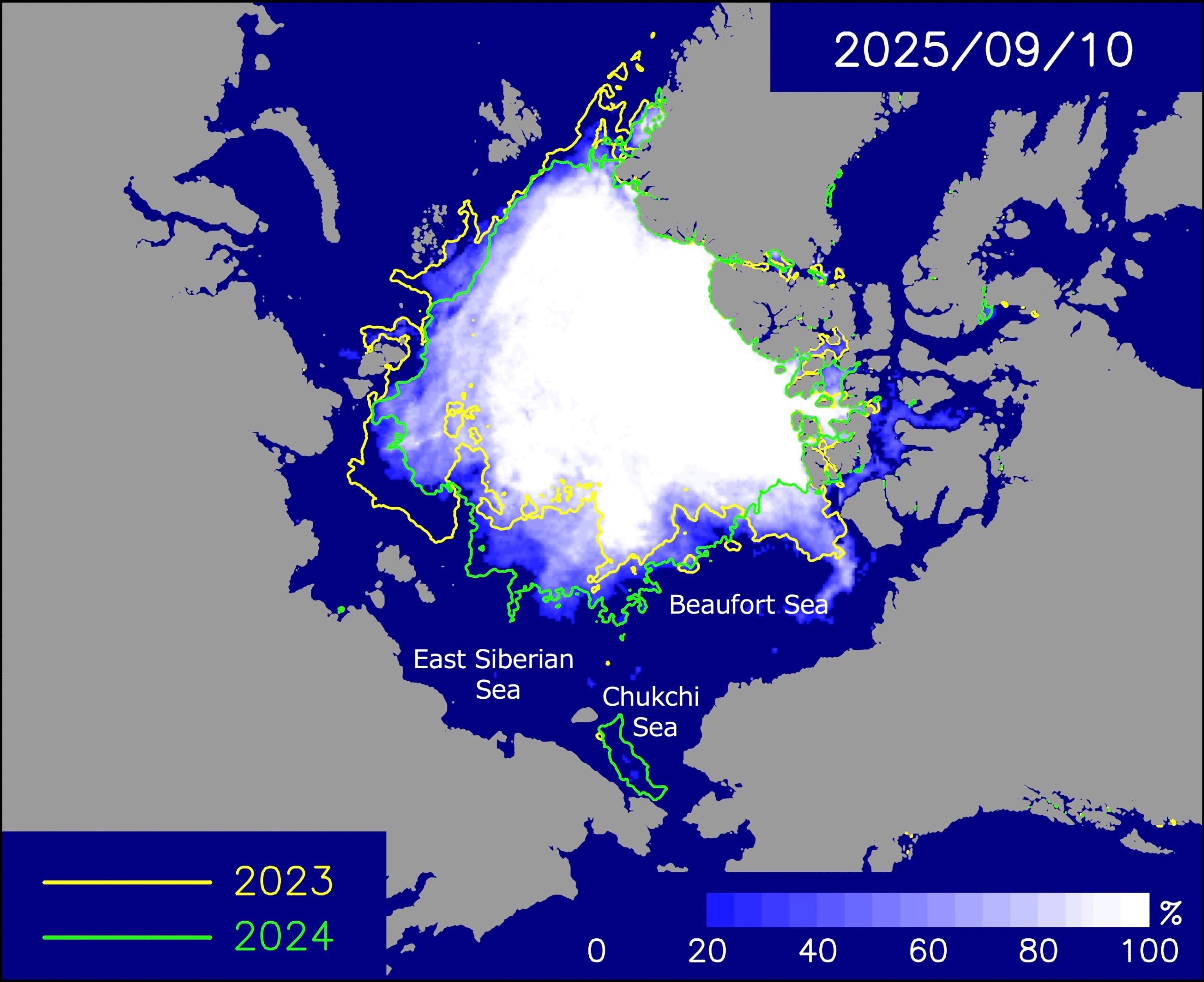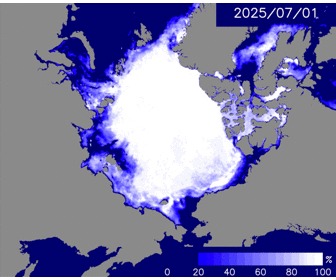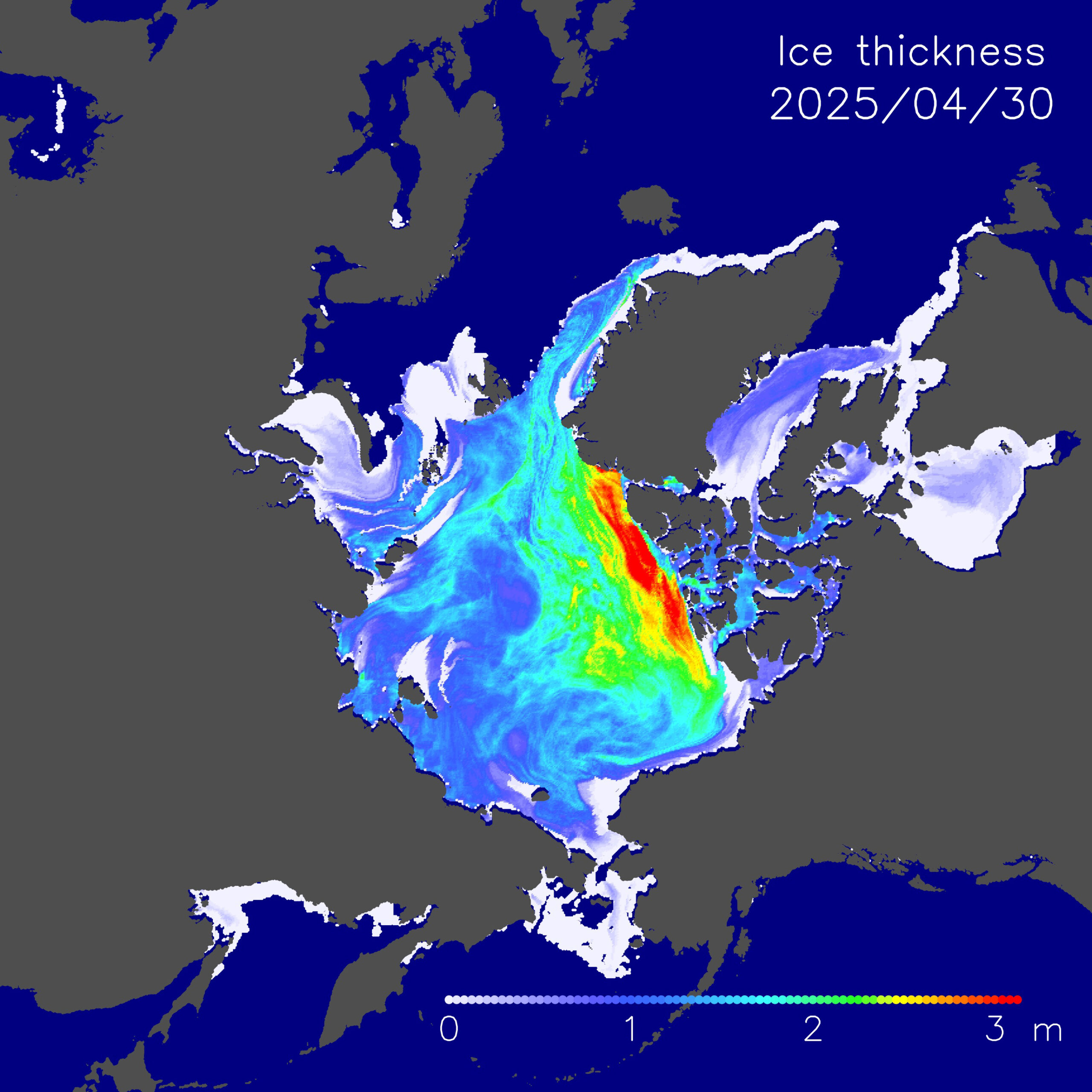2025 First report
Noriaki KIMURA (Atmosphere and Ocean Research Institute, The University of Tokyo) , Arctic Sea Ice Information Center

- The Arctic sea-ice extent is expected to shrink to 4.42 million square kilometers in mid September.
- The Northern Sea Route along the Russian coast is likely to open in late August, and the route along the Canadian coast (excluding the archipelago) is expected to open in late July.



The Arctic sea-ice extent is projected to decrease to around 4.42 million square kilometers at its annual minimum on September 11. This value is slightly larger than the minimums observed in 2023 and 2024.
Along the Russian coast, the Northern Sea Route is expected to open in late August. On the Canadian side, excluding the archipelago, the sea ice is projected to retreat from the coast by late July, allowing navigation. However, in recent years, sea ice has tended to persist even during summer in the Pacific sector, including the Beaufort Sea, Chukchi Sea, and East Siberian Sea. This year as well, sea ice may remain around Wrangel Island until mid September.
The sea-ice distribution in this forecast is calculated based on ice thickness at the end of April. We analyzed observational data from 2007 to 2024, focusing on the relationship between sea-ice thickness on April 30 and sea-ice concentration (the fraction of ocean covered by ice) from July onward. Our analysis shows that areas with thicker ice at the end of April tend to retain more sea ice during the summer. Using this relationship, we predicted the sea-ice concentration from July 1 onward, based on the observed ice thickness on April 30, 2025.
The ice thickness data used in the prediction were derived from observations by the satellite-borne microwave radiometers AMSR-E and AMSR2.These data will soon be made available via the Arctic Data archive System (ADS) of the National Institute of Polar Research.
You can also check the daily forecast and sea ice age data (daily and yearly) on Arctic Data archive System (ADS) at National Institute of Polar Research.
If you have any questions about satellite monitoring of the Arctic Ocean, sea ice forecasting, or the forecasting methods used here, please contact the Arctic Sea Ice Information Center (
).
The sea ice forecast and its basic research were started in GRENE, continued to ArCS Project, and has been conducted in ArCS II Project since 2020.


